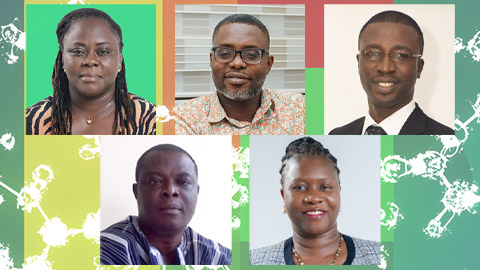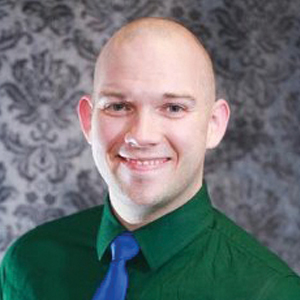The problem with LGBQT underrepresentation
Another Pride Month has come and gone, offering the same lesson it does every year — inclusion and diversity are important. Outside of the valid argument that we should respect and be kind to all different kinds of people, inclusion and diversity are important because every person brings a unique perspective to problem solving. Research has demonstrated the value of such diversity, yet lesbian, gay, bisexual, queer or transgender individuals in science, technology, engineering and mathematics continue to face barriers to professional advancement. This needs to change if we hope to have a diverse workforce ready to tackle the world’s toughest problems.
 Members of the U.S. Air Force participate in a 2016 Pride Month 5-K run in Illinois.U.S. AIR FORCE PHOTO
Members of the U.S. Air Force participate in a 2016 Pride Month 5-K run in Illinois.U.S. AIR FORCE PHOTO
I remember the first time I realized as a gay man that I had no idea how well-represented the LGBQT community was in the STEM workforce. I was at one of the nightly poster sessions at the 2012 annual meeting of the Ecological Society of America. I remember a new topic area of posters that year — ecologists investigating the representation of women and racial minorities in the field. They had lots of data showing women and people of color are underrepresented not only in ecology but in STEM overall, and they were beginning to ask the question, “Why are these groups underrepresented in STEM fields?” While we must do more work to answer this question and address these disparities, I found myself standing among these many posters wondering, “Where are data on LGBQT individuals in STEM? Am I, as a gay man, underrepresented in STEM?” I would find that the data didn’t exist.
While the National Science Foundation compiles detailed statistics about women, underrepresented minorities and the prevalence of various disabilities among researchers and STEM students in the U.S., it does not ask about LGBQT identification. Nor are there many large-scale, systematic, independent studies that address the representation of LGBQT individuals in the STEM workforce or question what the social environment is like in STEM workplaces for these individuals.
We know that many LGBQT scientists still fear coming out to their colleagues. This is likely because publishing, receiving tenure and getting grant funding all heavily depend on the judgment of colleagues, who might be influenced by their own explicit or implicit biases. Studies conducted over the past few years suggest such biases play a role in women and people of color receiving STEM awards and grants; there is no reason to think that the LGBQT individuals in the STEM community would be exempt from similar biases. The American Physical Society produced a report showing that one in three LGBQT physicists considered leaving their department or workplace in the last year, which correlated strongly with personally experiencing harassment and/or witnessing it.
LGBQT students also experience hostile environments in STEM programs. In a study conducted at a major university in the western U.S., researchers found that engineering students identifying as LGB did not have as many opportunities to succeed as their heterosexual peers due to the additional emotional and academic effort these students exhausted to internalize their sexuality. Another study of computer majors identifying as LGBQT at a university found that these students did not feel like they belonged in the field and were, therefore, less likely to continue in the major. And it’s possible that such issues, in addition to dealing with the hardships of identifying as LGBQT, keep LGBQT students from being retained in the STEM workforce.
Those challenges to success may be affecting who enters and who stays in STEM fields. This year, a study published in Science Advances reported that LGBQ individuals are less represented in STEM than their heterosexual counterparts (the study did not report on transgender students). This study used a longitudinal, national data set of 4,162 STEM-aspiring college students across 78 institutions to determine whether status as a sexual minority predicted a lower likelihood of retention in a STEM major. The study found that, by the fourth year of college, 71.1 percent of heterosexual students were retained in STEM, whereas 63.8 percent of the sexual minority students were retained — an approximate 7 percent difference between the groups. This difference increased to 10 percent when the author controlled for other factors that support retention in STEM. This study and others have shown that one factor that improves retention of students is participation in undergraduate research; yet even though LGBQ students in this study had higher rates of participation in undergraduate research relative to their heterosexual peers, they were still less likely to remain in STEM.
I experienced such issues as a gay graduate student. For example, one professor was concerned about their kids seeing a gay couple at their Christmas party. “Do you think they’ll display lots of affection to each other?” this professor asked a friend of mine. Once we got word of this, my partner and I respectfully decided not to attend the party. Whenever this professor and I had to be in the same room together for meetings, it was not pleasant for me. This made me question how other professors in my department felt toward gay people. That one incident turned what I thought was a very supportive environment into one I questioned as hostile.
But some research shows promise. A study published in 2015 in the Journal of Homosexuality suggests that LGBQT scientists feel more accepted in their fields compared with their peers in other professions. That is great news, since we know that when individuals can express their identities openly they are happier, healthier and more productive workers and can serve as role models to the next generation of young scientists. Still, more than 40 percent of those LGBQT STEM workers surveyed were not out to all their colleagues. There is still work to do to make sure that LGBQT students and faculty in STEM professions feel comfortable. And while the recent study in Science Advances was a great start to exploring decreased retention of students in STEM, there is more data to be collected and more research needed in this area.
Diversity can increase the efficacy and innovation of teams. For example, in a study of 4,277 companies in Spain, companies with more women were more likely to introduce radical new innovations into the market. In another study looking at profitability across 20,000 firms in 91 countries, companies with more female executives were shown to be more profitable. While these studies were correlational, there also have been laboratory studies to show that diverse teams have increased performance.
Many critical questions in STEM require innovation and a variety of perspectives to put forth adequate solutions or hypotheses. The underrepresentation of minority groups in STEM is thus a problem. We know that women, racial minorities and people with disabilities are underrepresented in the STEM workforce, because the National Science Foundation and others have collected data on this issue. One minority group that has been overlooked, however, is individuals who identify as LGBQT.
The world now faces some of its most challenging issues: climate change, cybersecurity and antibiotic resistance, to name a few. It is therefore critical that we ensure a diverse STEM workforce to bring to the table different perspectives and drive creativity and innovations in solutions to these issues.
Enjoy reading ASBMB Today?
Become a member to receive the print edition monthly and the digital edition weekly.
Learn moreGet the latest from ASBMB Today
Enter your email address, and we’ll send you a weekly email with recent articles, interviews and more.
Latest in Opinions
Opinions highlights or most popular articles

Getting to know scientists half a world away
In a program at Wellesley College, students interview and write about researchers at a university in Ghana.

Let’s make ASBMB awardees look more like BMB scientists
Think about nominating someone outside your immediate network.

A paleolithic peer review
You might think review panels have only been around for the last century or so. You would be mistaken.

Early COVID-19 research is riddled with poor methods and low-quality results
The pandemic worsened, but didn’t create, this problem for science.

So, you went to a conference. Now what?
Once you return to normal lab life, how can you make use of everything you learned?

My guitar companion
A scientist takes a musical journey through time and around the world.

